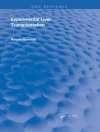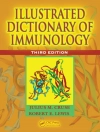A comprehensive guide on current clinical management options for pituitary tumors — including state-of-the-art endoscopic techniques
Thieme congratulates Theodore H. Schwartz on being chosen by New York magazine for its prestigious ‘Best Doctors 2015′ list.
Offering the unique dual perspective of neurosurgeons and otolaryngologists, Endoscopic Pituitary Surgery: Endocrine, Neuro-Ophthalmologic and Surgical Management describes both cutting-edge endoscopic techniques and tried-and-true decision-making methodologies that lead to the most successful outcomes. From choosing the right surgical or non-surgical approach for individual patients, to managing complex endocrine and neuro-ophthalmologic issues, this is the first major reference in the field in nearly a decade, making it the go-to guide for all interdisciplinary specialists who treat pituitary tumors.
Special Features:
- Step-by-step descriptions of the newest endoscopic pituitary and skull base procedures, ensuring that specialists have full mastery of techniques for different tumor types in this surgically challenging area
- The clinical wisdom and perspectives of the masters of pituitary surgery, who share insights on patient selection, endoscopic versus open procedures, medical management, and much more
- Operative pearls from both neurosurgeons and otolaryngologists
- Compelling discussions of the pros and cons of various procedures (e.g., the utility of intraoperative MRI in pituitary surgery cases)
- Inclusion of detail-revealing 3D endoscopic images (complete with 3D glasses)
- Rationale for a collaborative neurosurgery–otolaryngology team approach to developing and implementing the most innovative endoscopic and skull base techniques
Enhanced by hundreds of images, decision-making algorithms, and clinical pearls from experts on each tumor type, Endoscopic Pituitary Surgery is
สารบัญ
<p>1 History of Pituitary Surgery<br>2 Anatomy of the Pituitary Gland and Parasellar Region<br>3 Endoscopic Equipment<br>4 Preoperative Endocrine Evaluation<br>5 Radiographic Evaluation of Pituitary Tumors<br>6 Indications for Surgery on Pituitary Tumors: An Endocrinologist’s Perspective<br>7 Indications for Surgery on Pituitary Tumors: A Neurosurgeon’s Perspective<br>8 Histology of Pituitary Tumors<br>9 Prolactinomas and Apoplexy<br>10 Acromegaly<br>11 Cushing’s Disease<br>12 Thyroid-Stimulating Hormone Tumors<br>13 Clinical Management of Nonfunctioning Pituitary Adenomas<br>14 Neuro-Ophthalmologic Considerations<br>15 Endoscopic Transsphenoidal Approach to the Sella<br>16 Clinical Pearls in Endoscopic Pituitary Surgery: A Neurosurgeon’s Perspective<br>17 Clinical Pearls in Endoscopic Pituitary Surgery: An Otolaryngologist’s Perspective<br>18 Virtual Endoscopy in Endoscopic Pituitary Surgery<br>19 3D Stereoendoscopic Pituitary Surgery<br>20 Endoscope-Assisted Transsphenoidal Surgery<br>21 Endoscopic Pituitary Surgery in the Cavernous Sinus<br>22 Microscopic versus Endoscopic Transsphenoidal Pituitary Surgery<br>23 Microscopic and Endoscopic Transsphenoidal Pituitary Surgery: A Reasoned and Balanced Dialectic<br>24 Extended Endonasal, Endoscopic Transsphenoidal Approach versus Craniotomy for Giant Pituitary Macroadenomas<br>25 Stereotactic Radiosurgery and Fractionated Radiation for Pituitary Tumors<br>26 Atypical Adenoma, Pituitary Carcinoma, and the Role of Chemotherapy in the Management of Refractory Pituitary Adenoma<br>27 The Utility of Intraoperative MRI in Pituitary Surgery<br>28 Limited Utility of Intraoperative MRI in Endoscopic Pituitary Surgery<br>29 The Role of Stereotactic Navigation in Endoscopic Pituitary Surgery<br>30 Anesthesia Considerations<br>31 Managing Postoperative Sinusitis<br>32 Managing Carotid Injury During Transsphenoidal Surgery<br>33 Managing Postoperative CSF Leak<br>34 Postoperative and Neurocritical Care Management of Patients after Endonasal Endoscopic Transsphenoidal Pituitary Surgery</p>












